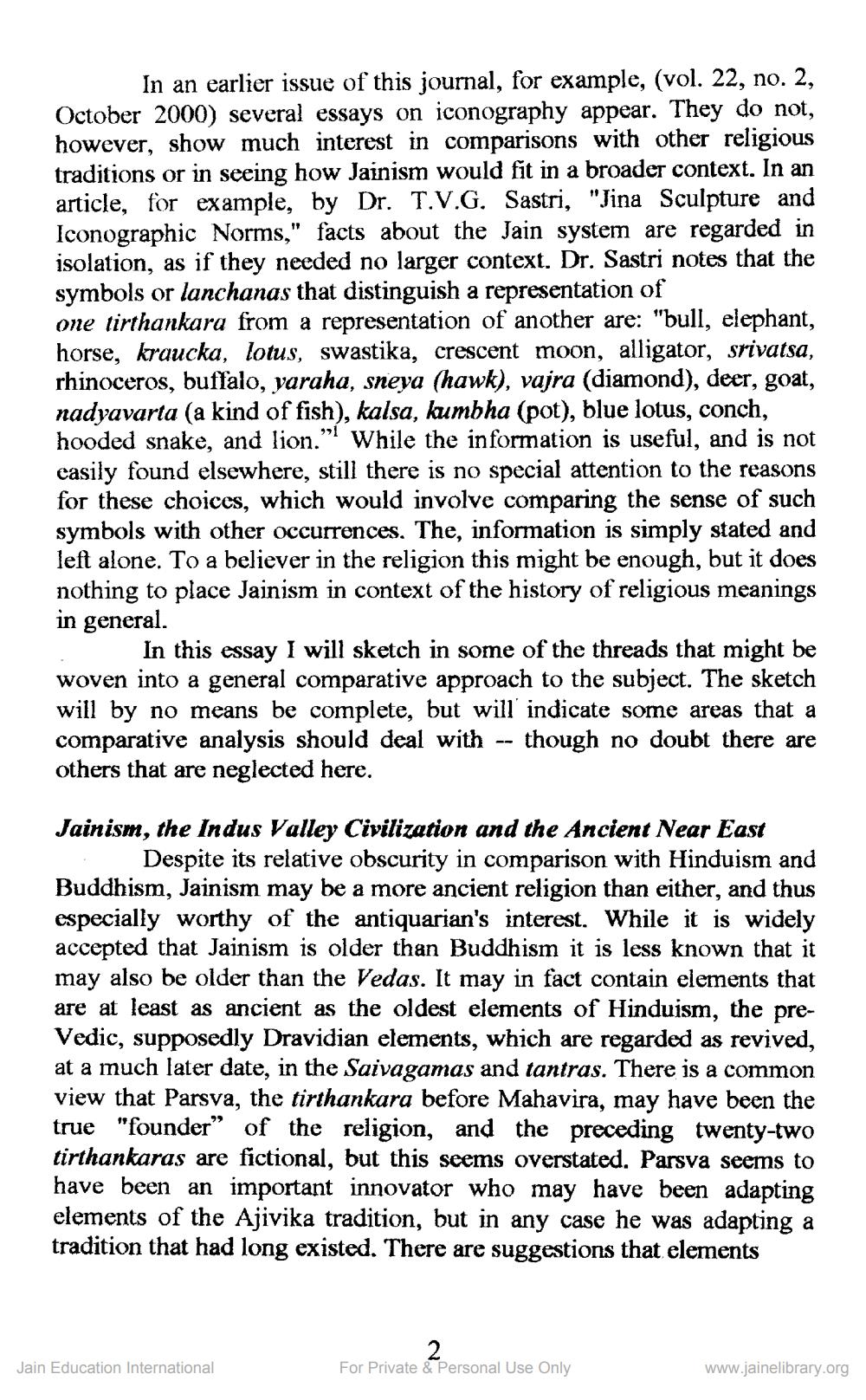Book Title: Jinamanjari 2002 04 No 25 Author(s): Jinamanjari Publisher: Canada Bramhi Jain Society Publication View full book textPage 6
________________ In an earlier issue of this journal, for example, (vol. 22, no. 2, October 2000) several essays on iconography appear. They do not, however, show much interest in comparisons with other religious traditions or in seeing how Jainism would fit in a broader context. In an article, for example, by Dr. T.V.G. Sastri, "Jina Sculpture and Iconographic Norms," facts about the Jain system are regarded in isolation, as if they needed no larger context. Dr. Sastri notes that the symbols or lanchanas that distinguish a representation of one tirthankara from a representation of another are: "bull, elephant, horse, kraucka, lotus, swastika, crescent moon, alligator, srivatsa, rhinoceros, buffalo, yaraha, sneya (hawk), vajra (diamond), deer, goat, nadyavarta (a kind of fish), kalsa, kumbha (pot), blue lotus, conch, hooded snake, and lion." While the information is useful, and is not casily found elsewhere, still there is no special attention to the reasons for these choices, which would involve comparing the sense of such symbols with other occurrences. The, information is simply stated and left alone. To a believer in the religion this might be enough, but it does nothing to place Jainism in context of the history of religious meanings in general. In this essay I will sketch in some of the threads that might be woven into a general comparative approach to the subject. The sketch will by no means be complete, but will' indicate some areas that a comparative analysis should deal with -- though no doubt there are others that are neglected here. Jainism, the Indus Valley Civilization and the Ancient Near East Despite its relative obscurity in comparison with Hinduism and Buddhism, Jainism may be a more ancient religion than either, and thus especially worthy of the antiquarian's interest. While it is widely accepted that Jainism is older than Buddhism it is less known that it may also be older than the Vedas. It may in fact contain elements that are at least as ancient as the oldest elements of Hinduism, the preVedic, supposedly Dravidian elements, which are regarded as revived, at a much later date, in the Saivagamas and tantras. There is a common view that Parsva, the tirthankara before Mahavira, may have been the true "founder" of the religion, and the preceding twenty-two tirthankaras are fictional, but this seems overstated. Parsva seems to have been an important innovator who may have been adapting elements of the Ajivika tradition, but in any case he was adapting a tradition that had long existed. There are suggestions that elements Jain Education International For Private & Personal Use Only www.jainelibrary.orgPage Navigation
1 ... 4 5 6 7 8 9 10 11 12 13 14 15 16 17 18 19 20 21 22 23 24 25 26 27 28 29 30 31 32 33 34 35 36 37 38 39 40 41 42 43 44 45 46 47 48 49 50 51 52 53 54 55 56 57 58 59 60 61 62 ... 76
